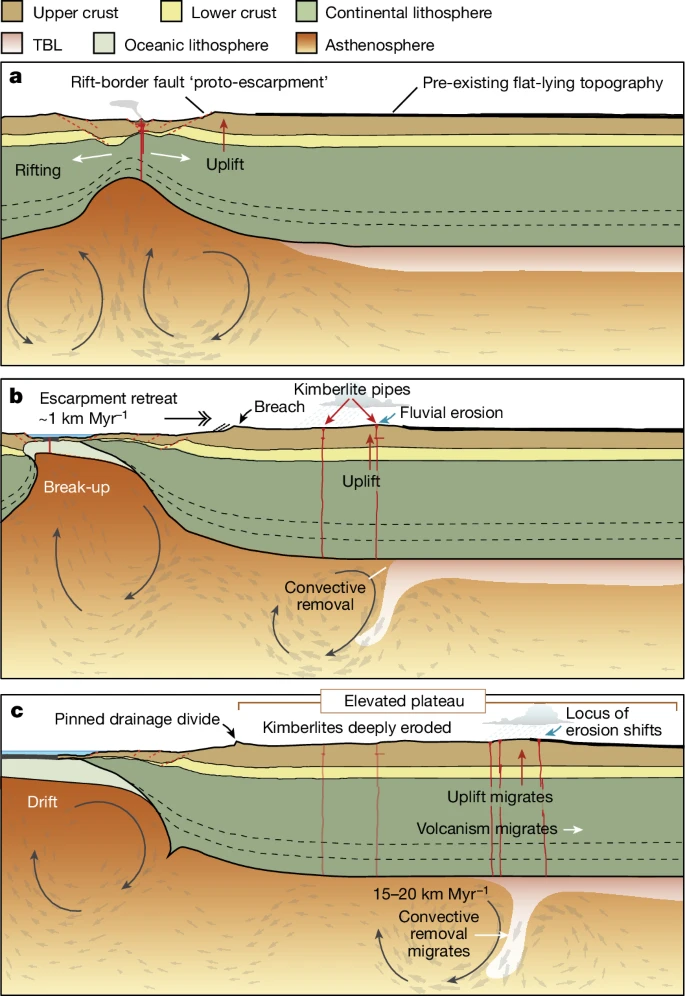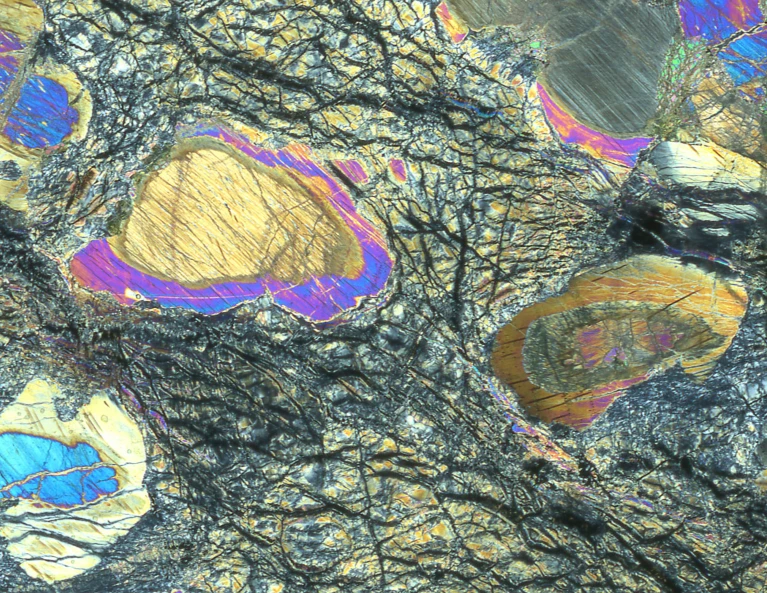Mantle Waves Form Mountains
This ARTICLE, based on THIS PAPER in Nature, suggests that the splitting apart of a continental plate affects not only the area near the rift zone, but also the interior of the continent. 30 or 40 km of the roots of the continent are stripped away and this wave of root erosion moves towards the interior of the craton. And this results in an increase in altitude of the land surface.
I always thought that high land required deep roots - think of the deep crust below the Tibetan plateau. Here the suggestion is that the removal of roots allows the land to rise, like a baloon rising when the sandbags are thrown overboard.
The example cited is the Drakensberg of South Africa. This, and similar, if less impressive formations, form escarpments around the cratons formed at the breakup of Gondwana. The paper suggests that the coastal escarpments of Brazil and the Western Ghats of India have a similar origin.
a, Rifting causes edge-driven convection in the mantle, rift-flank uplift and escarpment formation. b, Rayleigh–Taylor instability migrates along the lithospheric root, resulting in convective removal of the TBL of the lithospheric keel, driving kimberlite volcanism11, isostatic uplift and denudation. c, Escarpment becomes a pinned drainage divide that is locally breached by the main rivers draining the plateau. Meanwhile, the convective instability continues to migrate towards the continental interior, leading to isostatic uplift, a shift in the locus of erosion and plateau formation (Fig. 4).
The authors believe that they explain why the interior of the cratons is so high and also the occurrence of kimberlites.
This is a very complex subject and I do not pretend to understand much of the arguments but read the papers and come to your own conclusions.




